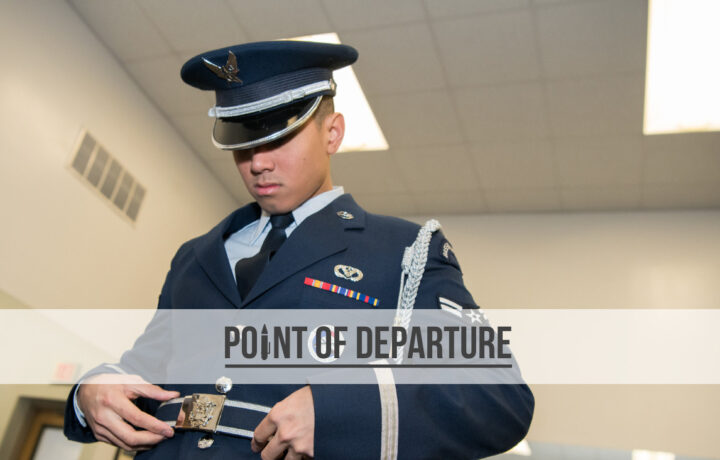“Discipline is the soul of an army.” – George Washington
Last week, I was walking back from a conference at our student union building and stepping along with some purpose. I don’t amble. I don’t shuffle from one place to another. I move out at pace, pay close attention to my surroundings, and never linger in the open.
Old habits die hard.
But what caught my attention that day wasn’t the speed with which I cross campus. As I approached my Jeep, I tucked my notebook under my left arm as I pulled out my keys, all the while keeping my right hand free. It’s a habit deeply ingrained in me after serving in the military: I never carry anything in my right hand. I keep that hand unencumbered in the event I have to make or return a salute.
I haven’t raised a salute in a decade, yet here we are.
Standards and Discipline
In the United States, standards and discipline have gone hand-in-hand with military service since the American Revolution. From the time he held his own command, George Washington sought to instill standards and discipline into his troops. Yet when Friedrich Wilhelm von Steuben, the Prussian military officer who would exert a significant influence on the Continental Army, arrived at Valley Forge in February 1778, he found an army sorely lacking in both.
In short order, von Steuben introduced standardized drills, emphasized discipline, and used innovative training techniques to transform the young army into an effective fighting force. His “Blue Book” – Regulations for the Order and Discipline of the Troops of the United States – became the standard drill manual by act of Congress on March 29, 1779, and “remained the official manual of the United States Army… until the beginning of the War of 1812.”
Throughout history, standards and discipline have always been fundamental to the fighting proficiency of an army. And, as Shelton Williamson noted in a 2017 NCO Journal article, “As the standards and discipline of [Continental] units improved, so did the success of the American Army.” The standards and discipline instilled by von Steuben “would become the very core that would separate our Army from other fighting forces around the world.”
10 Military Habits that Die Hard
I just shook my head and laughed that day as I fished my car keys out of my pocket. Long ago, I just accepted the fact that I am who I am. I’ve tried to excise some of the milspeak from my daily language, but all I succeeded in doing was getting my new colleagues to emulate my terminology. Which, by the way, has led to some hilariously inappropriate moments.
But old habits die hard. Most of what we learn during our time in uniform is hard wired into us by the time we transition. We don’t have to splatter our DD-214s across the back window of our pickups; everyone around us knows us when they see us. From the way we walk to the way we talk to the way we carry ourselves, everything about us says “military.”
1. The gig line.
I can’t walk out the door in the morning unless I have a clean gig line that aligns my shirt buttons, belt buckle, and zipper. And the temptation to correct others is always present.
2. Walking on the grass.
On the rare times when I walk over the grass, I feel like I’m doing something taboo. Unless I have good reason, I stick to the sidewalks, even if it means walking a little farther.
3. The green notebook.
The color sometimes changes, but the use does not. Same style, same notetaking methodology, same cartoons drawn in the back.
4. Military DTG format.
Everything from my phone to the clock in my office is set on a 24-hour clock. And when I sign anything, I still use the day-month-year notation.
5. Carrying a backpack.
Unless my backpack is loaded for war, it’s always slung over one shoulder – my left one, so I can keep my right hand free. I’m not sure who taught me that, but it’s in there deep.
6. Showing up early.
“If you’re not ten minutes early, you’re late.” Oh, man, did that stick. Even if I consciously try to show up right on time, I’m five minutes early. Because every watch I own is set five minutes ahead.
7. Lacing shoes left over right.
Is there another way? Because if there is, I can’t remember. From running shoes to dress shoes to work boots. Left over right. And I tuck in my laces more than I might want to admit.
8. Spit shining shoes.
Thank God for dress sneakers. Before that, I was polishing my shoes every weekend. I still have cans of Kiwi, a brush, and an old t-shirt… all tucked away just in case.
9. Using “Roger” in conversation.
And… roger. I also have a metric… ton of military idioms built into my everyday language, from “pull chocks” to “pop smoke,” and a few that aren’t well-suited for family-friendly audiences.
10. Using an umbrella.
Still can’t do this one. If it’s raining hard, I break into a double-time and move out with a purpose. But I don’t use an umbrella unless I’m wearing a tie. And I NEVER wear a tie.
What else? I still hang all my clothes facing to the left. I have my shirts and pants starched to hold a tight crease. I burn loose strings on my clothes with a lighter (which has ruined a few pieces of clothing). And I grit my teeth if I see a cadet on campus wearing the uniform incorrectly.
But I don’t hesitate to put my hands in my pockets. I’m a rebel at heart.




